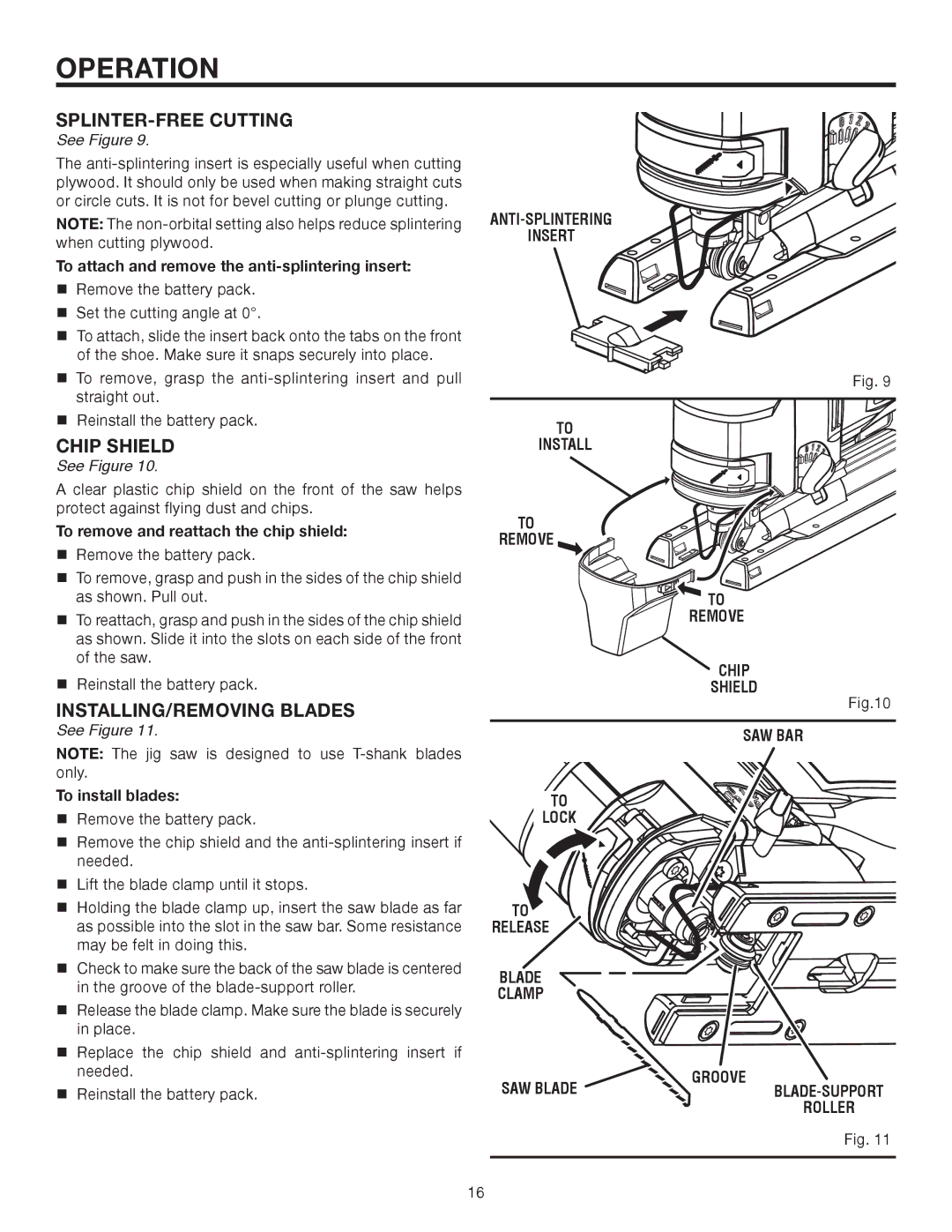
OPERATION
SPLINTER-FREE CUTTING
See Figure 9.
The
NOTE: The
To attach and remove the anti-splintering insert:
Remove the battery pack.
Set the cutting angle at 0°.
To attach, slide the insert back onto the tabs on the front of the shoe. Make sure it snaps securely into place.
To remove, grasp the
Reinstall the battery pack.
CHIP SHIELD
See Figure 10.
A clear plastic chip shield on the front of the saw helps protect against flying dust and chips.
To remove and reattach the chip shield:
Remove the battery pack.
To remove, grasp and push in the sides of the chip shield as shown. Pull out.
To reattach, grasp and push in the sides of the chip shield as shown. Slide it into the slots on each side of the front of the saw.
Reinstall the battery pack.
INSTALLING/REMOVING BLADES
See Figure 11.
NOTE: The jig saw is designed to use
To install blades:
Remove the battery pack.
Remove the chip shield and the
Lift the blade clamp until it stops.
� Holding the blade clamp up, insert the saw blade as far as possible into the slot in the saw bar. Some resistance may be felt in doing this.
� Check to make sure the back of the saw blade is centered in the groove of the
� Release the blade clamp. Make sure the blade is securely in place.
Replace the chip shield and
Reinstall the battery pack.
![]()
![]()
![]()
![]()
![]()
![]()
![]()
![]() INSERT
INSERT ![]()
![]()
![]()
![]()
![]()
![]()
![]()
![]()
![]()
![]()
![]()
![]()
![]()
![]()
![]()
![]()
![]()
Fig. 9
TO
INSTALL
TO
REMOVE
![]()
![]()
![]()
![]()
![]()
![]()
![]()
![]() TO
TO
REMOVE
CHIP
SHIELD
Fig.10
SAW BAR
TO
![]() LOCK
LOCK![]()
![]()
![]()
![]()
![]()
![]()
![]()
TO ![]()
![]()
![]()
![]()
![]()
![]()
![]()
![]()
![]()
![]()
![]()
![]()
![]()
![]()
![]()
![]()
![]()
![]()
![]()
![]()
![]()
![]()
![]() RELEASE
RELEASE ![]()
![]()
![]()
![]()
![]()
![]()
![]()
![]()
![]()
![]()
![]()
![]()
![]()
![]()
![]()
![]()
![]()
![]()
![]()
![]()
![]()
![]()
![]()
![]()
![]()
![]()
![]()
![]()
BLADE
CLAMP
SAW BLADE | GROOVE |
| ROLLER |
| Fig. 11 |
16
